A blanket of grey clouds mask the warm glow of the sun. The air is cold and damp. You are feeling unmotivated and wonder,
“Should I go on that hike?”
Or maybe you need to be in town today and this dreary, cold weather has sucked all the gusto from your bones. You are discouraged.
“Should I hop on my bike?”
Your answer should be YES!
Of course, your level of comfort will depend on the type and amount of clothing you are wearing.
Even the most hardcore hikers and cyclists will often ponder if they are wearing the right clothing to stay warm and dry when the weather gets cold.
Is there a new fabric that provides better insulation?
Should I add another layer for warmth?
What is the best way to keep my fingers and toes warm?
Clothing, like technology, is always improving. And your dressing technique should too. Here we’ll discuss the best clothing to wear when backpacking, the fabrics that best wick away moisture, dry quickly, and are breathable.
Heat Loss
Your body functions as a furnace, producing heat through activity and chemical reactions from within. As physical activity increases, so does heat production. Conversely, as activity decreases, so does heat production. Feeling a little cold? Quicken your pace! Feeling hot? Slower your pace or take a rest. Adjusting your level of activity is only part of the equation for adapting to a harsh environment. Keeping yourself warm becomes easier when you understand how heat is lost.
Heat is lost in four ways:
- evaporation of bodily fluids such as sweat and respiration (breath);
- conduction when the body contacts a colder surface, such as water, sitting on a cold bench, sleeping on the ground, improper footwear, or exposed hands on hiking poles;
- convection, a type of conduction where one of the objects is in motion, such as wind displacing the insulated air close to the body by cold air from the outside;
- radiation when heat is released away from the body.
When your internal body temperature initially drops, goosebumps form and you begin to shiver. While goosebumps no longer serve us, shivering does.
Shivering is the body’s initial attempt to generate heat by movement of muscles. Shivering will warm the body temporarily until glycogen stores run out.
![By Evert (Flickr) [CC-BY-2.0], via Wikimedia CommonsInitial signs of heat loss goose bumps](https://upload.wikimedia.org/wikipedia/commons/2/23/Goose_bumps.jpg)
If your core body temperature continues to drop, your blood capillaries will shrink to restrict blood flow to protect its core. The core includes vital organs such as the brain, heart, kidneys, liver, and lungs. The body will sacrifice its “shell” (fingers, toes, arms, legs, muscles, and so on) to keep vital organs warm. This is referred to as the shell/core effect.
The effects of cold weather are increased by –
- Temperature
- Wet (rain, sweat, water)
- Wind (blowing, moving, e.g., biking)
The effects of cold weather are reduced by –
Heat Retention
- Body fat (insulation)
- Your body’s surface area to mass ratio (short & stout body type is more efficient versus tall & thin)
- Clothing Insulation (layering/type)
- Shell/core effect (body sacrifices extremities to keep vital core alive)
Heat Production
- Shivering (until glycogen stores run out)
- Level of activity
- Eating & Drinking
- Fuel stores (glycogen)
This demonstrates several important points to staying warm:
1. Insulate
Since you can not control the outside temperature, you must protect yourself. Aside from storing extra bodily fat, the quickest option is to insulate with clothing.
Most heat loss is due to radiation, which can be prevented by covering exposed skin and adding insulating clothing (see below about layering). While at rest, conductive heat loss occurs while sitting or lying on the cold ground. To retain body warmth when sitting or sleeping, use a ground pad. If you use a ¾ pad, always put clothing or gear underneath your feet or legs while sleeping. Closed-cell foam generally offers the best insulation (R-value) by weight.
If you suffer from cold feet while hiking, look to your footwear. Thick soled shoes and liners are a must. If your shoe insoles are thin, replace them. The primary source of conductive heat loss while hiking occurs from the feet contacting the cold ground via the sole of the footwear. Replacing your regular insoles with felt insoles will provide much better insulation and is cheaper than purchasing a new pair of shoes. When cycling, get out of those metal clip-in shoes, which siphon the warmth from your feet.
2. Stay dry
Insulation will do little to provide warmth if you don’t have a way to stay dry.
Your body can lose 25 times more heat when in contact with wet objects (versus dry conditions or with dry clothing). When your clothes are sweaty (or wet), the loss is increased 5 times. Thus, it is crucial to wear quick-dry and wicking clothing next to your skin and a waterproof outer layer to stay warm.
Wear a windproof outer layer when moving fast. Wind speed (blowing, moving, e.g. biking) accelerates the rate of heat loss and makes the air temperature feel much colder than it is. The heat loss from exposed skin on a cold and windy day is referred to as wind chill. As the wind increases, it draws heat from the body, driving down skin temperature and eventually the internal body temperature. Wearing a lightweight rain jacket solves this problem.

3. Food and Fluid Intake
Do both properly and frequently. Balanced meals and adequate hydration are essential to maintaining body heat and preventing dehydration. Exercising in the cold requires more energy than in warm weather because the body is burning extra calories to keep the body warm. You won’t feel as hungry or thirsty during winter activity, even though the caloric needs of the body have increased. Although the meal may seem unappealing, eat anyway. Filling your stomach with food activates the digestive process generating heat while it’s digesting the food. Make sure you are eating plenty of fat calories (nuts, seeds, oils). Besides providing energy, fats are vital for insulating your body, supporting immunity, and brain health. See also Outdoor Herbivore’s recommended foods to eat during the cold.
Drink fluids often, preferably hot, non-alcoholic beverages or soup. Caffeinated drinks such as coffee should be limited because it increases urine production and contributes to dehydration. Caffeine also improves the blood flow at the skin surface, which can increase the loss of body heat. Water, hot cocoa, and soups are best.
Insulating with layers
Temperature can fluctuate widely during the winter. For instance, it is not uncommon for the morning temperature to be 20 degrees F and the daytime temperatures reaching into the mid-’50s.
The best way to prepare for fluctuating temperatures is to dress in layers. You are probably already familiar with layering as an outdoor clothing strategy. Clothing is simply added and removed as the temperature fluctuates, and your level of activity changes. Layers are ideal for changing conditions because they insulate you when it is cold and removed when you get too hot. Also, layers dry faster than one heavily insulated clothing piece, plus you can always swap out the wet layer.
Three layers will cover most winter conditions.
Each layer performs a different function, a base layer to keep you dry, a mid-layer to keep you insulated, and an outer layer to protect you from the elements. Taken together, all three layers provide excellent warmth and comfort. But, wearing layers is only part of the key to staying warm. The most important thing is to know what type of fabrics will keep you dry.
Hikers generate a lot of sweat regardless of the outside temperature. By the time you realize you are too hot, you are already wet (a wicking baselayer helps a lot, see below). But a wicking shirt is no guarantee to keep you dry. The material requires air to circulate, so evaporation can take place. If your clothing gets soaked from sweat, it may not evaporate in the cold air. If it stays wet, your core body temperature will drop, which can result in hypothermia. It is important to always remove moist layers.
1. Your Base Layer: Wicking Fabric
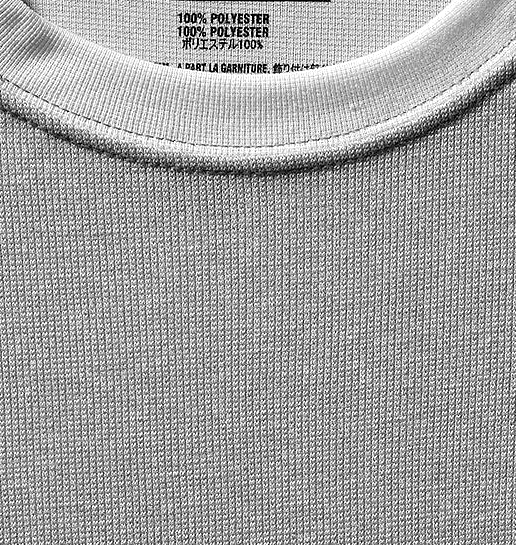
A good base layer is one that draws moisture away from your skin, a characteristic known as wicking. Wicking fabrics work based on the principle of capillary action and water repulsion. Perspiration is transferred from your body to the outer layer of the fabric where it can quickly evaporate to keep you dry. Certain materials have this moisture-wicking capability, often referred to as ‘performance fabrics’ in the sporting industry. Performance fabrics usually refer to synthetics fabrics or blends that are specially weaved and chemically treated for moisture transport. Although not technically wicking, merino wool also qualifies as a performance fabric because it insulates when wet.
Performance fabrics are different than ordinary synthetics, such as polyester. First, the weave is interwoven in a weave or waffle pattern to allow moisture to escape through the gaps in the weave to the exterior side of the material. Second, performance fabrics are often chemically treated to enhance their wicking capabilities. Although polyester is naturally hydrophobic (water-hating), the interior side of the fabric is chemically treated to allow it to pull water from the body, essentially making it water-loving (hydrophilic). This changes the surface tension of the fabric to allow it to more readily absorb sweat. And when the moisture makes contact with the outer layer, which is still hydrophobic, it is promptly evaporated. For this reason, it is important to NOT wear polyester or performance shirts inside out. Otherwise, it won’t work as designed.
- The base layer is always worn next to the skin. It should be snug-fitting to retain the warmth generated from your body (in hot weather get a looser fit; the extra air circulation cools you down faster).
- Wicking fibers, such as polyester, make ideal base layers. Look for a noticeable waffle texture or weave design for optimal performance.
- Don’t wear synthetic wicking shirts inside out! They are not effective when worn the wrong way because the fabric is chemically altered to draw moisture on the interior and evaporate on the exterior.
2. Your Mid Layer: insulating fabrics
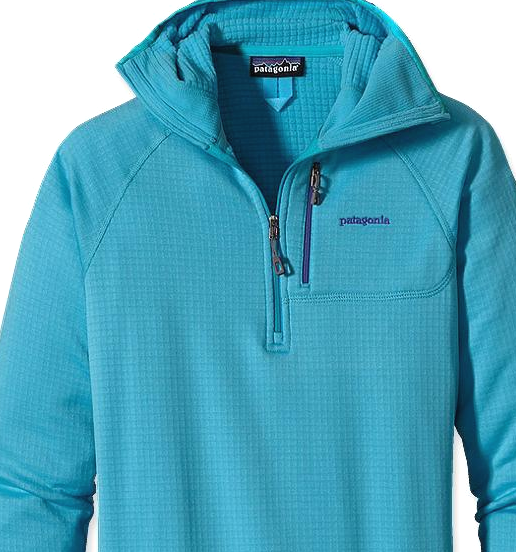
The second layer or middle-layer provides warmth by trapping your body heat, thereby acting as an insulator. The mid-layer is generally a heavier weight fabric than the base layer. The primary purpose is to regulate body temperature by trapping warm air next to the body (created by the pockets of air between clothing and the space of air the body has warmed). Adding an additional insulating mid-layer can work better than a single insulating layer when it is frigid.
- Insulating fibers include the warmer synthetics such as nylon, fleece/polyester/PETE, and poly/olefin blends (Thinsulate). A breathable insulating layer such as mid or heavy-weight fleece is ideal. Polar fleece, Polartec, Thermafleece, Thermax, and Microfleece are good fabric choices for the winter.
- Wool is the traditional mid-layer material with several excellent properties: it has good insulation even when wet; although does wool absorb moisture, it does not feel wet because it transfers moisture. Keep in mind that wool comes from an animal. It may not be something you want to support. If you buy wool, consider the welfare of the animal. Always check the country of origin and brand to ensure the wool is non-mulesed and ethically treated. U.S., Canadian, and New Zealand sourced wool are generally the most ethical (i.e., Ibex, Icebreaker, Smartwool).
3. Your Outer Layer: durable fabrics
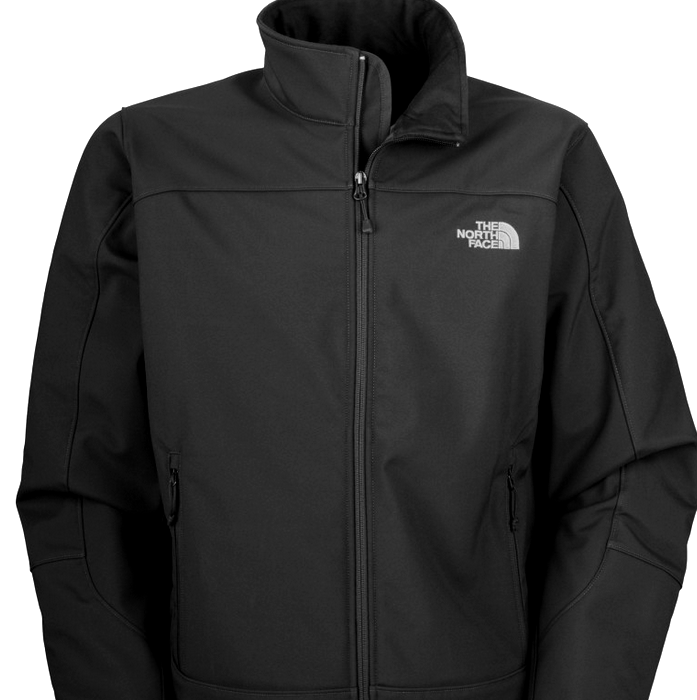
An outer layer protects you from thickets of thorny brush, insects, sun exposure, wind, and water. A weatherproof and windproof outer layer will protect you in most conditions.
- Outer Layer materials include those that are waterproof and windproof but offer some breathability, such as Goretex or Cordura. You don’t necessarily need to go out and purchase anything new. Your old ski jacket can work well for this purpose since it usually is weather-resistant. If the ski jacket is too bulky, try your rain jacket. Rain gear works well as a wind stopper. Ideally, the weatherproof jacket should have zippered vents to circulate excess heat.
How many layers?
As mentioned earlier, three layers will cover most outdoor conditions. When it is extremely cold, you may need up to four layers, but often 3 is enough if using a heavier weight mid-layer. If it is less cold, you will need only two. Here is a rule of thumb for layering when hiking (for activities where you are moving, this may not be accurate due to windchill).
- If the temperature is less than 30 degrees F, you will need all 3 layers (up to 4 when it gets below 0 degrees F).
- If the temperature is between 30 and 50 degrees F, you can usually get away with 2 layers: a wicking base layer and a waterproof/windproof outer layer.
- If the temperature is between 50 and 60 degrees F, that is not cold. Unless you are wimpy or it is very damp outside, all you should need is a long sleeve performance base layer.
Keep in mind when adding layers, any successive outer layers should be larger than the inner layer; otherwise, the outermost layer will compress the inner layers and will decrease the insulation properties of the clothing. And never wear a single bulky garment when hiking in the cold, even if it is heavier than the combined weight of the layers. A single layer does not insulate. Likewise, neither overdress or underdress, but if you must do one: choose to overdress. It is easy to eliminate outer layers to cool down, but if the layer is not there to begin with, you have no options other than to increase your activity level to warm yourself.
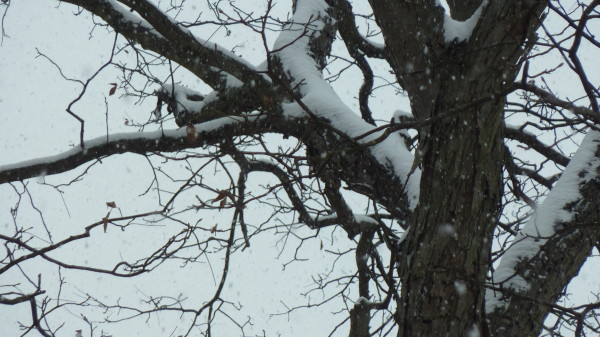
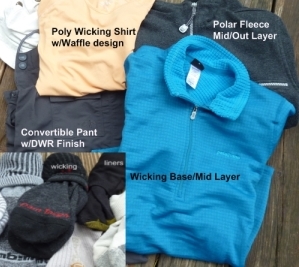
2 thoughts on “How to Dress to Stay Warm Outside”
Your content is really informative. Now I know what to bring, what to wear and what should I do when we go outdoor camping especially when it is cold outside. Thank you for sharing it with us and I am looking forward to read more from your articles.
Great, detailed post – good job!